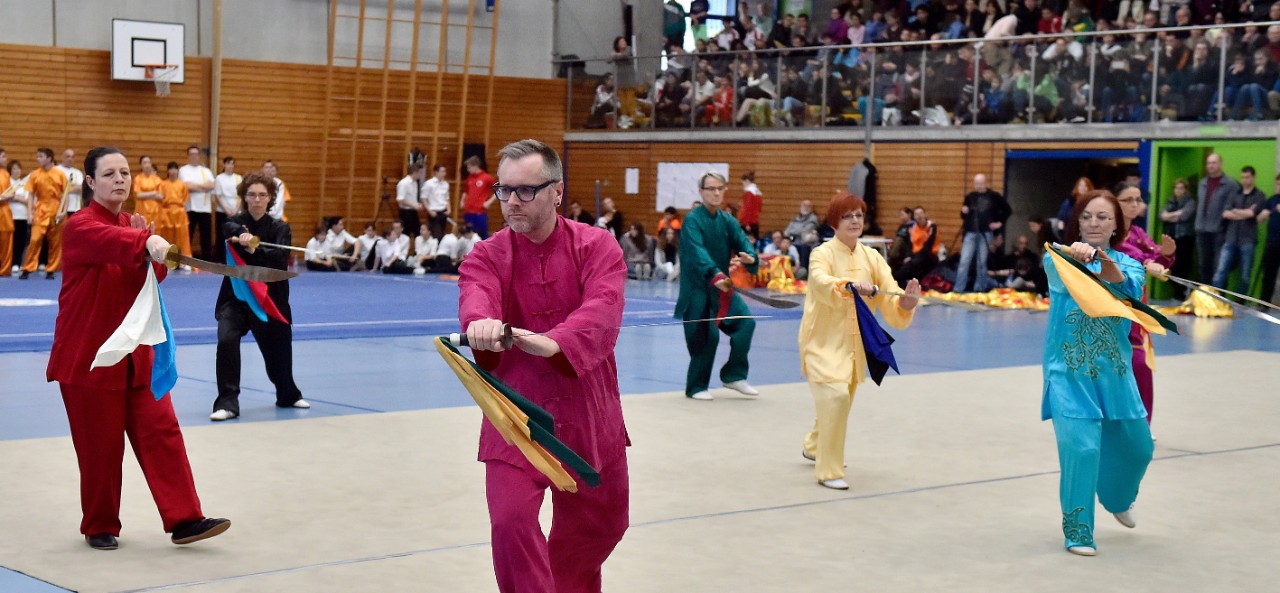Moving air
Mechanical and plastics engineer Roland Jäggi (53) has been practising tai chi for 21 years. In our interview he outlines why tai chi is the perfect sport for him.

What is tai chi?
For me, tai chi is meditation with movements. We perform forms and series of movements that last between five and ten minutes each. Tai chi is an holistic form of training. It requires concentration and focus. Your whole body is involved, starting from the way you stand and maintain your balance. For example, if you don’t centre your weight when performing a rotation on one leg, you’ll simply fall over.
Is tai chi challenging?
You can start "gently", but if you want to perform the movements precisely and correctly, you really have to concentrate. That’s what I find fascinating about tai chi: you have to focus all your attention on the movements and don’t have time to think about anything else. It’s great for switching off.
“you have to focus all your attention on the movements and don’t have time to think about anything else. It’s great for switching off.”
Where do you practise tai chi?
I take part in group training at the school of Wushu Academy Switzerland. However, once you know the sequences of movements off by heart, you can do tai chi on your own anywhere you like, be it at the lake, in your garden or even in the living room However, you need plenty of space for sequences that use a sword, stick or spear.
How often do you train?
I started off with one lesson a week. Today I train two evenings a week – once for two classes, once for three. I incorporate these classes into my routine and make sure I never miss them.
Who should do tai chi?
If you aren’t interested high-performance sport or competing, then tai chi may be the perfect activity for you. It offers an excellent combination of relaxation and meditation combined with concentration and movement. I, for one, always work up a sweat while training. The great thing about tai chi is that you can do it well into old age. I know people who still train at the age of 75.
Power, flexibility, relaxation, balance – are these all elements of tai chi?
Holding low crouching positions is certainly tough on the legs, but tai chi won’t help you build up muscle mass. Instead of fighting against opponents, we mainly move air. Balance and flexibility are more important, which is why we always stretch at the start of every lesson.
Is tai chi a slow-motion sport?
Most of the movements are very slow. However, the very first form of tai chi – known as chen tai chi – also features stamps, jumps and blows, and naturally you can’t do the jumps slowly. I find it fascinating when the movement changes suddenly from slow to very fast.
“but tai chi won’t help you build up muscle mass.”
Tai chi derives from a martial art. Could you defend yourself in an emergency?
In theory, yes. However, our school doesn’t teach self-defence. We sometimes do partner exercises where we try to throw our partner using an arm movement. This demonstrates that you can’t do much with your arms alone. If you want to build up energy, you really need to move from the hips. In "push hands tai chi", you have attack and defence. But in our school, all the movements are peaceful and harmonious, more like a dance.
So, are there tai chi schools that are more focused on esoterics and others that are more sporty?
Yes, there are different styles of tai chi, covering the whole spectrum from esoteric to sporty. Anyone interested in trying tai chi should go for a trial in different schools to find the kind of tai chi that suits them best. At Wushu Academy Switzerland we focus primarily on movement and the correct execution of the moves. We practise "grounded" tai chi.